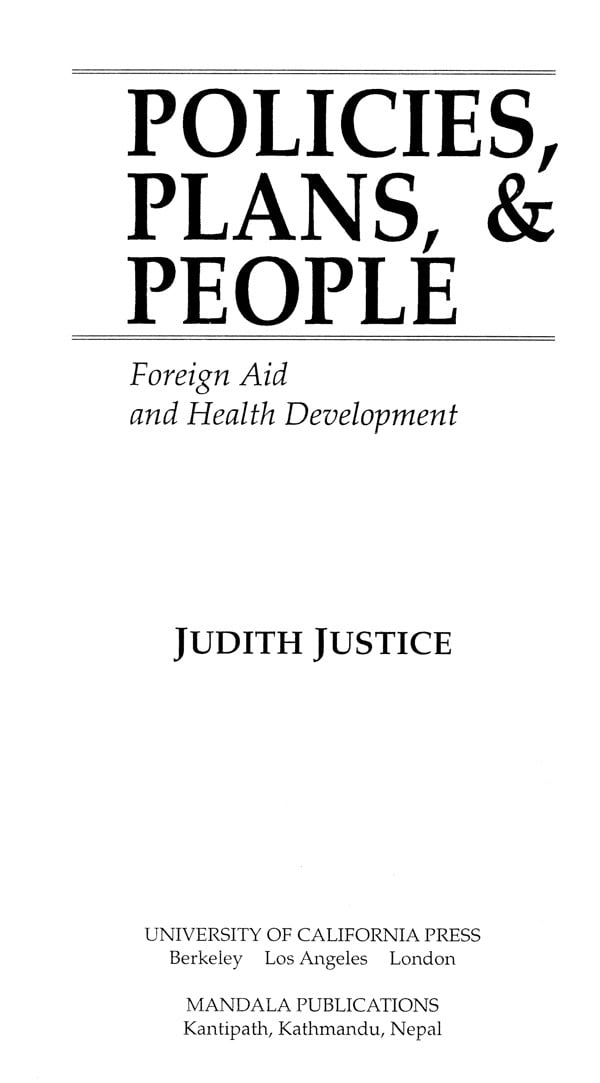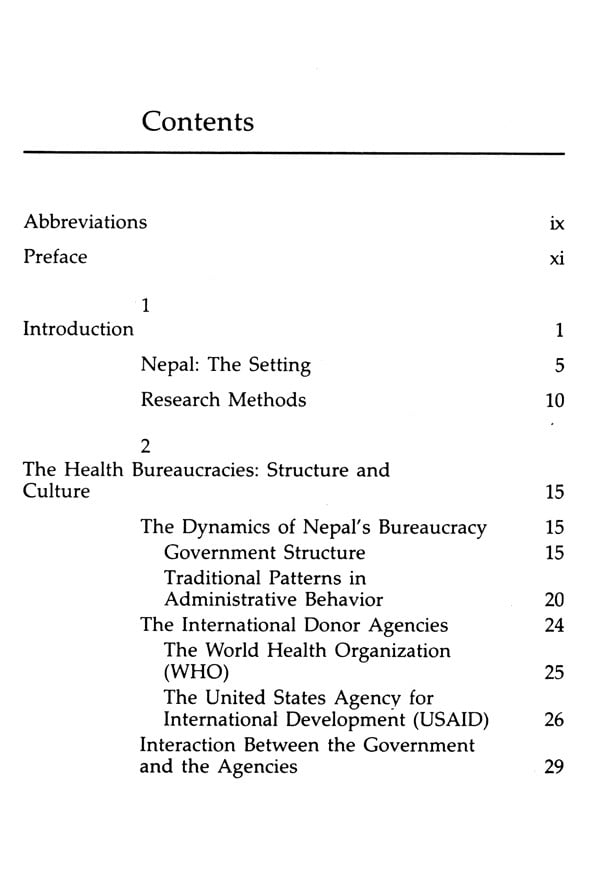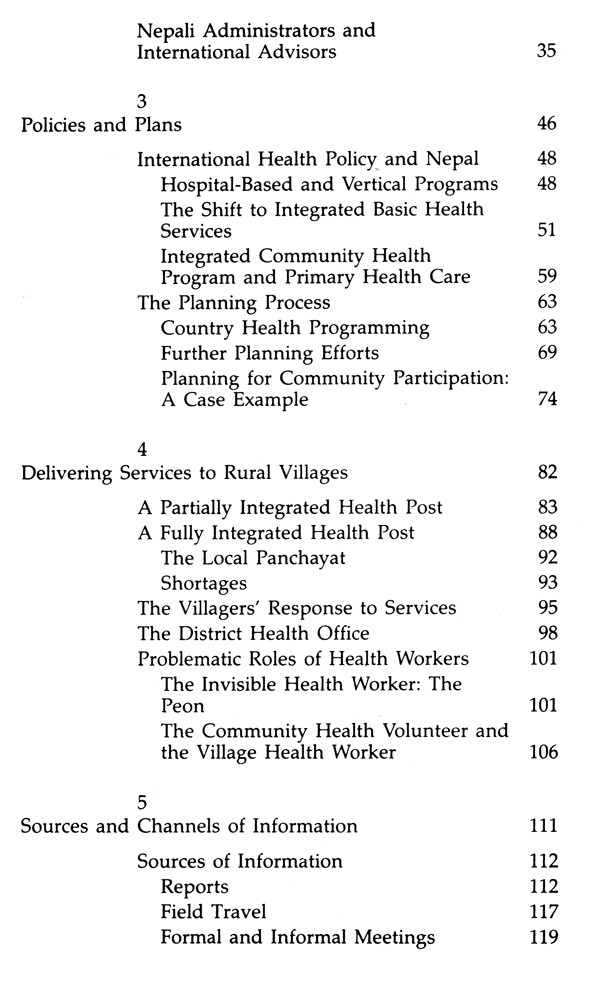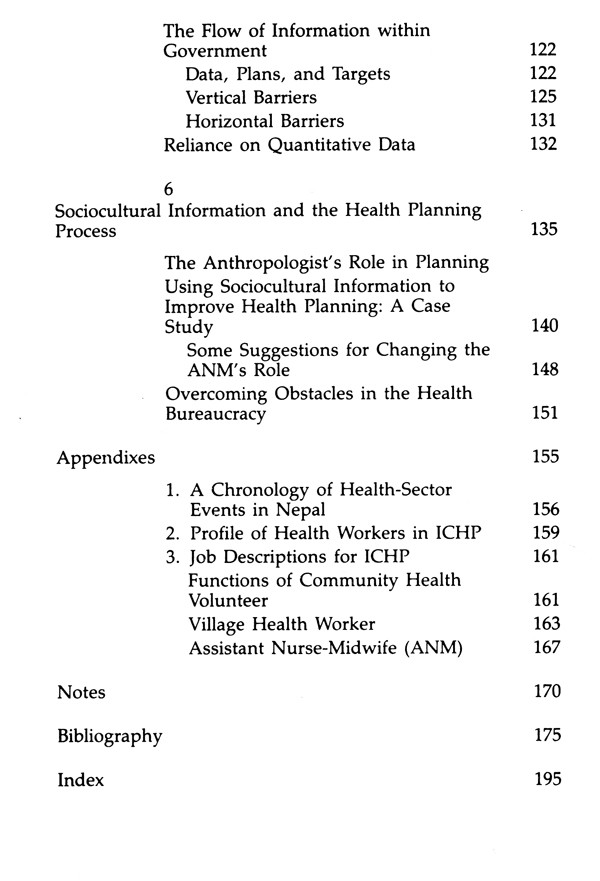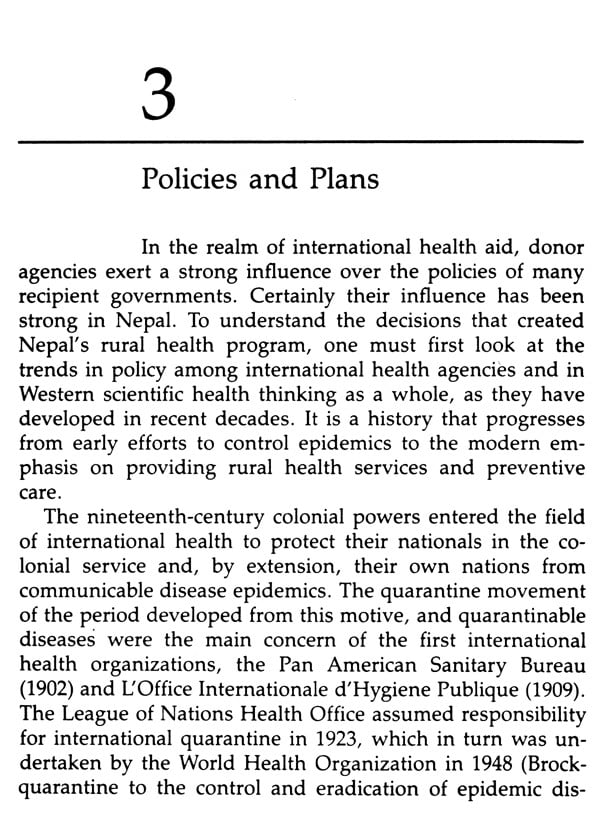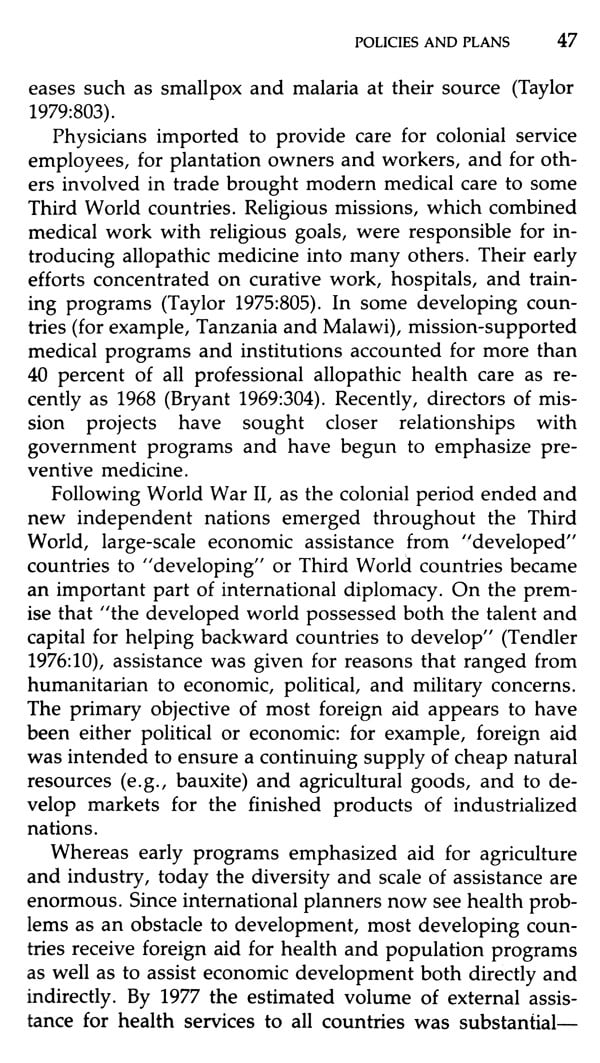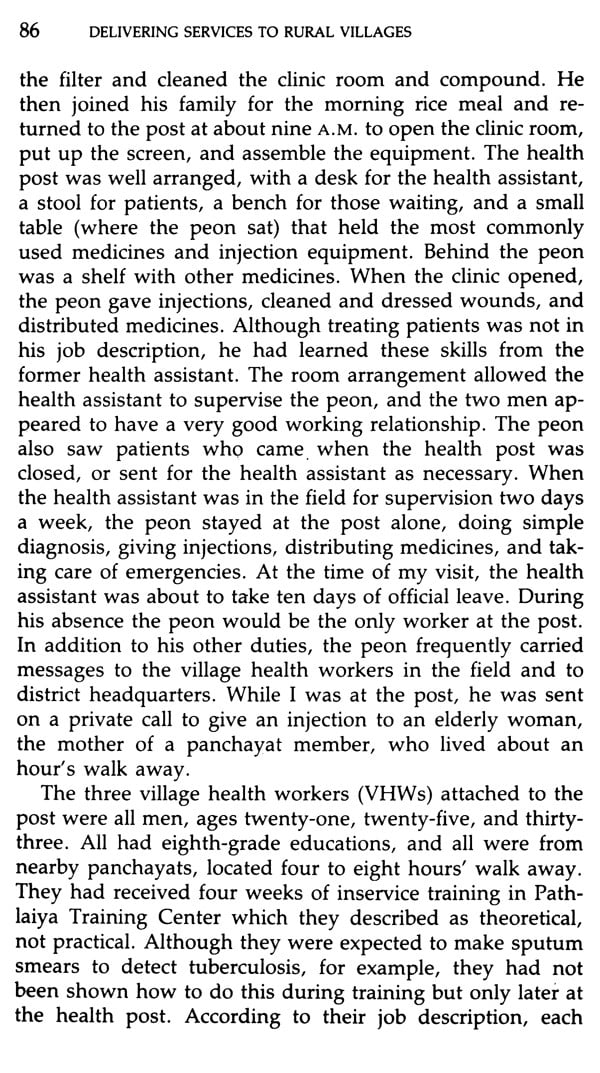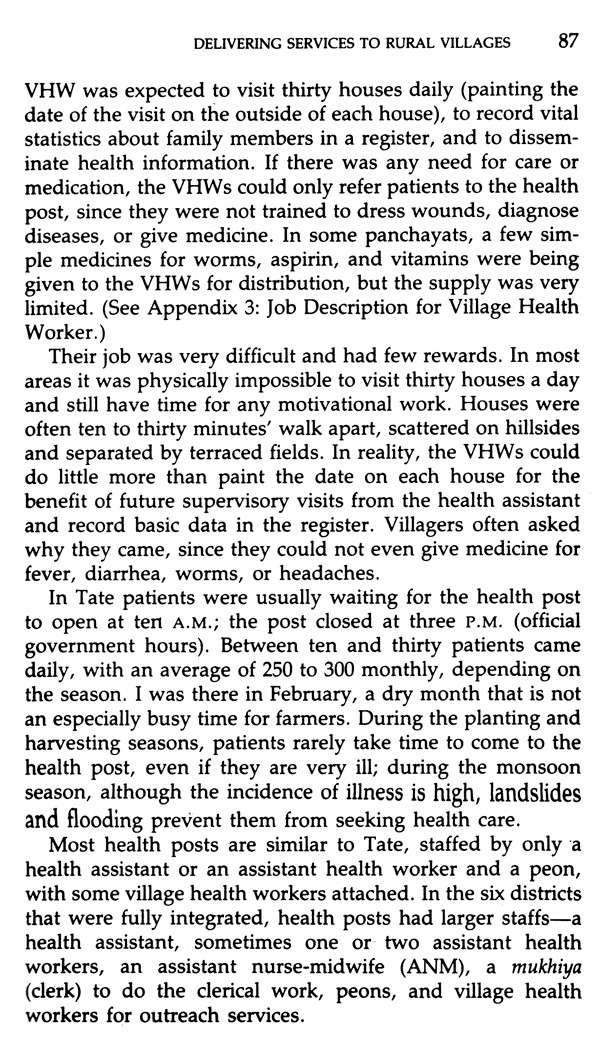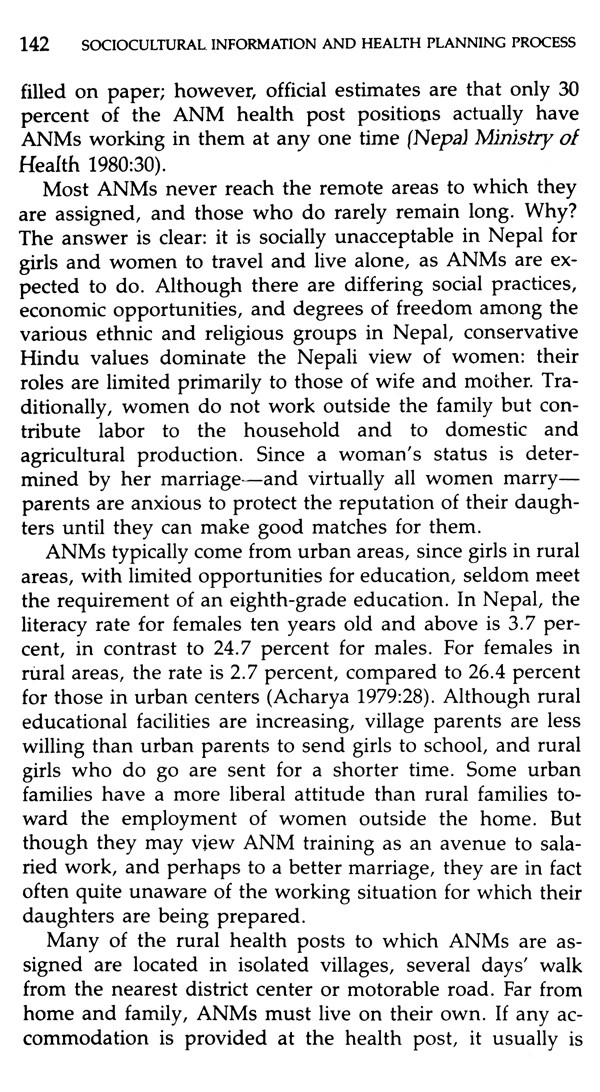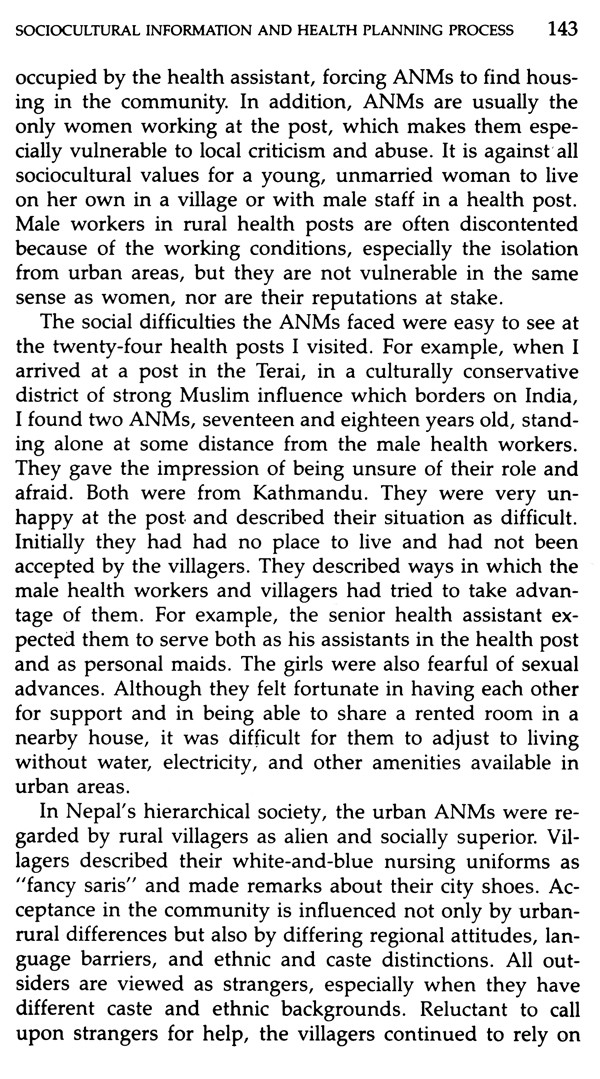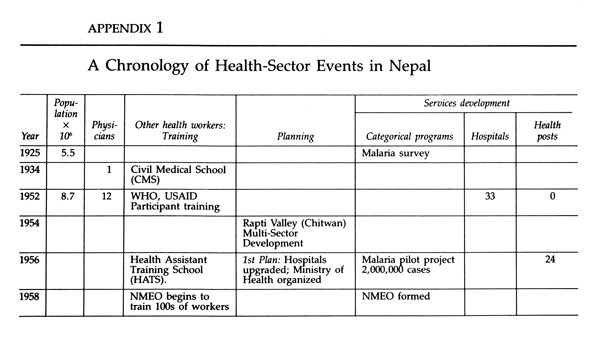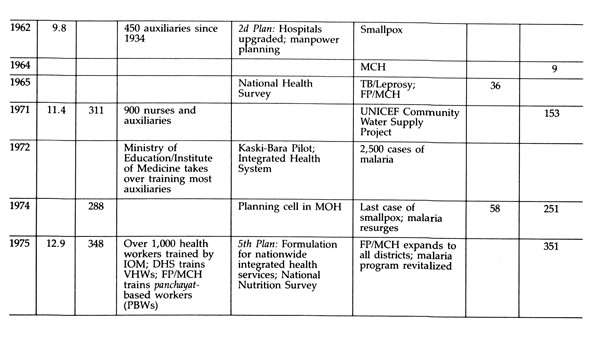
Policies, Plans, & People (Foreign Aid and Health Development)
Book Specification
| Item Code: | UAT756 |
| Author: | JUDITH JUSTICE |
| Publisher: | Mandala Publications |
| Language: | English |
| ISBN: | 9780520067882 |
| Pages: | 218 |
| Cover: | PAPERBACK |
| Other Details | 8.50 X 5.50 inch |
| Weight | 300 gm |
Book Description
Although this book centers on research I carried out in Nepal during the late 1970s, it actually originated a decade earlier. My interest in the cultural aspects of foreign assistance began in the late 1960s when I was working in Africa and South Asia for international agencies. Despite the good intentions and dedication of many planners and administrators, I saw that internationally assisted health pro- grams often resulted in services that were inappropriate to the local needs and resources, and consequently less than fully successful. Granted that foreign assistance reflects complex political and economic considerations, I thought it should be possible within these given limitations to design. programs that would be culturally compatible with the populations they serve. With this end in mind, I returned to the United States to train as a medical anthropologist.
In the early 1970s in India, I also became aware that the priorities of international funding agencies shifted frequently, changing trends in international assistance. When I started my research some years later, I looked specifically at the policy then being given the highest priority-primary health care-in order to gain insight into the process through which policy trends develop and the impact they on the national health services of countries receiving aid.
This book examines the cultural dimensions of primary health care in Nepal, from the program's antecedents in international health policy centers in Geneva and Washington to its outcomes in remote rural villages. Drawing on extensive participant observation, I have described many features of the program that were unsuitable for the local conditions and cultures. To discover the sources of the problem, I explored the bureaucratic environments in which policymaking and planning take place, and tried to identify barriers to cultural sensitivity within the health planning process.
Although there are signs that international interest in primary health care is already waning, my recent visits to Nepal and other areas in South and Southeast Asia, as well as my further experiences as a consultant with international agencies, have confirmed that the conclusions of this study are still valid, because they refer to general processes rather than to a particular program. The intermeshing of the various ac- tors involved in developing and implementing health pro- grams as I observed them remains much the same today. In fact, the study's conclusions are more relevant today, because once again the priorities in international health are shifting this time away from the integration of health services and back to a focus on specific diseases and health problems-and new cycles of policymaking and planning are under way.
My purpose in undertaking this study was to find ways for anthropologists and planners to combine their expertise in a more practical and effective approach to providing health care-in particular, to help make the tremendous monetary contributions and manpower available for assistance produce more culturally appropriate services. During the course of my research, health planners and administrators often said to me that anthropological study benefits only anthropologists, not the group being studied. I hope that my experience in international organizations and my training in the social sciences have enabled me to write a book that will be read and used by those I have studied-the foreign and Nepali health planning community-as well as by those in the academic world who are interested in the problems of development.
The relationship between planning and performance can be perplexing, even in simple situations where few people are involved. It becomes much more complicated when plans are made on a vast scale for the benefit of people whom the planners themselves may never meet and whose view of their own most pressing needs may never be asked. How can the gap between the people on the receiving end of planning and the well-intentioned designs of planners of ten far removed from the recipients best be bridged, so that imagination and resources may achieve the most beneficial result?
Since the 1940s international health agencies, in cooperation with national governments, have achieved some remarkable successes in developing hospital-based health services and in attacking communicable diseases. The world- wide eradication of smallpox presents the most dramatic ex- ample of what has been accomplished through international expertise and technical assistance. The incidence of malaria has been checked, though not eradicated, and health conditions in general have improved considerably. During the 1960s, however, international attention focused on the rap- idly growing need to extend basic health services, both preventive and curative, to more people, and especially to rural populations in developing countries.
**Contents and Sample Pages**
